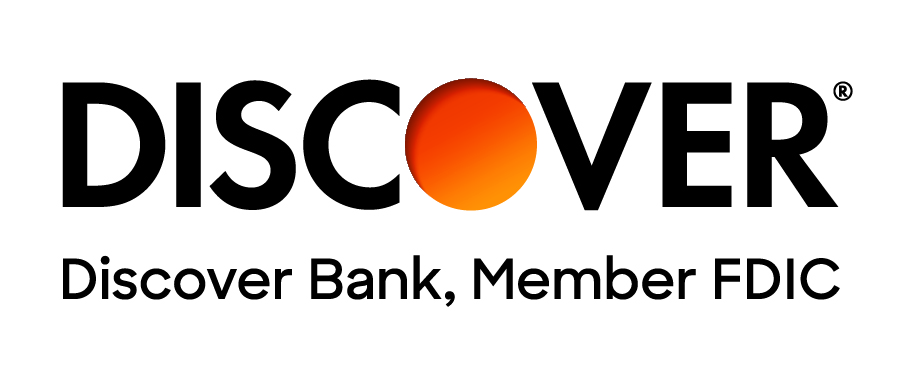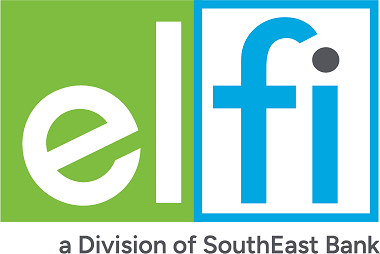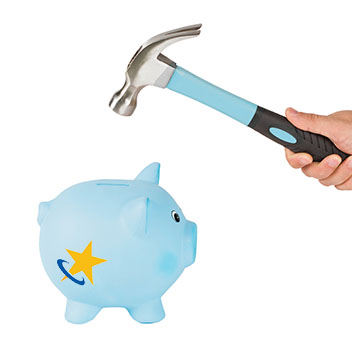Dealing with student loan debt and looking for ways to pay it off quicker? The good news is, there are effective strategies to manage it without stretching your budget too thin. Here are some simple steps to help you start reducing that debt right away.
1. Enroll in Automatic Payments
Many private student loan lenders offer an interest rate discount to borrowers who enroll in automatic payments. This discount is typically 0.25% though some lenders offer a 0.50% discount. Enrolling in automatic payments can also help you avoid late fees by accidentally missing a payment.
2. Make Bi-Weekly Payments
By implementing this strategy, you make half of your monthly payment every two weeks. This method results in an extra payment each year, as you'll make 26 half payments instead of 12 full payments. Not only does this reduce your loan balance faster, but it also saves you money on interest.
Ensuring your lender applies any additional payments to the loan principal, rather than the next month's payment, is crucial. Keep in mind that some lenders may not allow bi-weekly automatic payments, requiring you to make payments manually.
Please remember to pay attention to your loan due date when making bi-weekly payments, ensuring both payments are received on time. It's essential to pay your monthly payment amount in full every month.
Now, let's explore strategies that may require more financial sacrifice to accelerate the repayment of your student loans.
3. Make Extra Payments
If you want to pay off your student loans faster, the best way to do that is to make extra payments. You can make additional payments toward your loan each month on top of the payment you are required to make, or you can make extra payments sometimes, for example if you’ve received some money as a gift or a bonus at work. Be sure to request that your lender apply any extra or over payments to the principal balance on your loan.
4. Make More than the Minimum Payment
If you make all of your minimum payments on time, you will pay off your student loan in the original agreed upon timeframe between you and your lender. However, if you make more than the minimum payment, even if that amount is small, such as ten dollars, you will pay your loans off sooner. For example, if your monthly payment is $50 per month and you pay $60 per month, by the end of the year you have applied an additional $120 toward your debt. That’s nearly two and a half months’ worth of payments you have eliminated, simply by adding an additional ten dollars to your payment amount! Be sure to request that any over payment be applied to the principal balance of your loan.
5. Make Payments While in College
If your student loans don’t require you to pay while in college, that doesn’t mean you shouldn’t. Other than Direct Subsidized Loans, you are responsible for the interest that accrues on your loans while in college. You can make interest only payments which will be applied to the interest accruing on your loan.
Here's Why You Might Want to Do This
Once your loans enter repayment, the interest is capitalized (i.e., added to your loan principal balance and then you pay interest on that new increased balance). If you have paid all of the interest while in college, there is no interest to capitalize and your loan principal will reflect the amount you originally borrowed when your grace period ends.
You’re not limited to interest-only payments while in school. If you are working it is wise to make whatever payments you can toward your student loans to reduce the overall interest you will pay and your balance when your grace period ends.
6. Paying Off Outstanding Interest to Avoid Capitalization
All federal student loans come with a grace period. This is the period of time after you’ve left school (or drop below half-time enrollment) and before you must start making payments on your student loans. At this point, the interest you have been accruing on your loans has not been added to your loan balance. If possible, pay off the accrued interest during your grace period to avoid that amount being capitalized (added to your loan principal) at the end of your grace period.
Now let’s take a look at some general strategies you can employ to help you pay your student loans off faster.
7. Create a Budget
There are few things more effective at getting your finances under control than a budget. Knowing how much money you have coming in and where it is going will help you identify areas where you can cut back and apply that money to your student loans. A budget doesn’t have to be difficult to create. There are several budgeting apps available to simplify the process.
8. Use a Savings App
There are several banks out there that let you round up the amount of your purchase to the next nearest dollar and place the difference into your savings account. This is a great way to save more money that you can then apply to your student loan balance. If your bank does not offer this feature, check out an app like ChangEd. The ChangEd app allows you to round-up your daily purchases or schedule savings based off your habits.
9. The Debt Snowball Method
The debt snowball method is a strategy to help you make physical and mental progress toward your goal of being free of student loan debt. Here’s how it works.
First, list all of your student loans from smallest balance to largest balance. Once you have your debt written down, you’ll know where to start. Begin by putting all of your extra money toward your smallest debt first. Once this debt is paid, you will take the money you were applying to that debt (and any additional funds), add it to your minimum payment amount, and tackle the next highest balance student loan.
Why the Debt Snowball Works
The idea behind the debt snowball is two-fold. It gives you an outlined method for tackling your debt, and as you knock out those smaller student loans you will feel a psychological boost from having fewer and fewer debts to pay. Sticking with the debt snowball can build momentum that keeps you motivated.
10. The Debt Avalanche Method
The debt avalanche approach offers a strategic method for tackling your student loans. Begin by compiling a complete list of your loans, noting the interest rates for each. Next, pinpoint the loan carrying the highest interest rate; this becomes your primary target for repayment. Allocate the maximum payment possible towards this high-interest loan while continuing to make the minimum payments on your other loans. This technique prioritizes loans that cost you the most over time, streamlining the path to becoming debt-free.
Why the Debt Avalanche Works
Tackling your loans based on interest rate can help you save money overall by knocking out your highest interest rate loans first. As you eliminate loans, you will increase the payment on each subsequent loan until all of your debt is paid in full.
11. Refinance Your High-Interest Student Loans
One of the best ways to save on student loans is to reduce your interest rate. You can do this by refinancing your high-interest student loans. When it comes to private student loans and PLUS loans, you may be able to find a more competitive interest rate in the refi market. This also allows you to roll many student loans into one, reducing the number of bills you need to pay each month. Here’s what you need to know about student loan refinancing once you have located all of your student loans.
Consider Which Loans You Want to Refinance
Refinancing student loans has the potential to save you thousands. Especially if you are using the refinance to consolidate several high-interest private student loans. You can also include federal student loans in a private student loan refinance, however, there are a few things you’ll want to consider.
Should you choose to refinance your federal student loans privately, you will forfeit your eligibility for the benefits of the federal student loan program. These may include Public Service Loan Forgiveness, Income Based Repayment, and generous periods of deferment and forbearance.
You may also look into consolidating your federal student loans through the Direct Loan Consolidation Program. This will not reduce the interest rate you pay on your federal student loans, but can help you maintain some of the federal student loan benefits while reducing the number of federal student loan payments you make each month.
Compare Student Loan Refinance Lenders
Once you have all of your student loan debt gathered up, the first thing you will want to do when looking to refinance is to compare lenders. You can compare interest rates, repayment terms, and other benefits such as interest rate deductions for enrollment in automatic payments, cosigner release, and customer service.
Compare Top Refinance Lenders
Earnest Student Loan Refinancing
New-fashioned loans for the next generation.
Earnest is a technology company using cutting-edge data science, smarter design, and software automation to rebuild financial services.
With a mission to empower people with the financial capital they need to live better lives, Earnest's lending products are built for a new generation seeking to reach life's milestones. The company uses data and technology to understand every applicant's unique financial story and offer the lowest possible rates.
To qualify, you must be a U.S. Citizen, possess a Permanent Resident Card (10-year non-conditional or 2-year conditional), be a Deferred Action for Childhood Arrivals (DACA) Recipient, be an Asylee, or hold an H-1B visa with a U.S. Citizen cosigner, reside in a state Earnest lends in, and satisfy our minimum eligibility criteria. You may find more information on loan eligibility here: https://www.earnest.com/eligibility. Not all applicants will be approved for a loan, and not all applicants qualify for the lowest rate. Approval and interest rate depend on the review of a complete application.
Actual rate will vary based on your financial profile. Fixed annual percentage rates (APR) range from 4.50% APR to 10.74% APR (4.25% - 10.49% with .25% auto pay discount). Variable annual percentage rates (APR) range from 6.13% APR to 10.74% APR (5.88% - 10.49% with .25% auto pay discount). Earnest variable interest rate student loan refinance loans are based on a publicly available index, the 30-day Average Secured Overnight Financing Rate (SOFR) published by the Federal Reserve Bank of New York. The variable rate is based on the rate published on the 25th day, or the next business day, of the preceding calendar month, rounded to the nearest hundredth of a percent. The rate will not increase more than once a month, but there is no limit on the amount that the rate could increase at one time. Please note, we are not able to offer variable rate loans in AK, IL, MN, NH, OH, TN, and TX. Our lowest rates are only available for our most credit qualified borrowers and require selection of our shortest term offered (5 years) and enrollment in our .25% auto pay discount from a checking or savings account. Enrolling in autopay is not required as a condition for approval.
*Auto Pay Discount: If you make monthly principal and interest payments by an automatic, monthly deduction from a savings or checking account, your rate will be reduced by one quarter of one percent (0.25%) for so long as you continue to make automatic, electronic monthly payments. This benefit is suspended during periods of deferment and forbearance. Not all borrowers will qualify for our lowest rates, and your rate will be based on creditworthiness at time of application.
Earnest Loan Cost Example: These examples provide estimates based on payments beginning immediately upon loan disbursement. Variable annual percentage rate ("APR"): A $10,000 loan with a 20-year term (240 monthly payments of $101.46) and a 10.74% APR would result in a total estimated payment amount of $24,350.40. For a variable loan, after your starting rate is set, your rate will then vary with the market. Fixed APR: A $10,000 loan with a 20-year term (240 monthly payments of $101.46) and a 10.74% APR would result in a total estimated payment amount of $24,350.40. Your actual repayment terms may vary.
The information provided on this page is updated as of 07/08/2025. Earnest reserves the right to change, pause, or terminate product offerings at any time without notice.
Earnest Loans are made by Earnest Operations LLC. Earnest Operations LLC, NMLS #1204917. 300 Frank H. Ogawa Plaza, Suite 340, Oakland 94612. California Financing Law License 6054788. Visit www.earnest.com/licenses for a full list of licensed states. For California residents: Loans will be arranged or made pursuant to a California Financing Law License.
Earnest loans are serviced by Earnest Operations LLC with support from Higher Education Loan Authority of the State of Missouri (MOHELA) (NMLS# 1442770). Earnest LLC and its subsidiaries, including Earnest Operations LLC, are not sponsored by agencies of the United States of America.
© 2025 Earnest LLC. All rights reserved.
THIS IS AN ADVERTISEMENT. YOU ARE NOT REQUIRED TO MAKE ANY PAYMENT OR TAKE ANY OTHER ACTION IN RESPONSE TO THIS OFFER.- Actual prequalified rates from multiple lenders in 3 minutes.
- Checking rates on Credible is free and will not impact your credit score.
- Refinance federal, private and ParentPLUS loans.
- You could lower your interest rate or reduce your monthly payment.
- Refinance $5,000 up to the full balance
Student Loan Refinancing Rate and Terms Disclosure:
The lenders on the Credible.com platform offer fixed rates ranging from 3.99% - 11.09% (3.99% - 11.09% APR). Variable interest rates offered by the lenders on Credible.com range from 4.31% - 12.05% (4.31% - 12.05% APR). Variable rates will fluctuate over the term of the borrower's loan with changes in the Index rate. The Index will be either LIBOR, SOFR, or the Prime Rate of interest as published in the Wall Street Journal (WSJ). The maximum variable rate on the Education Refinance Loan is the greater of 21.00% or Prime Rate plus 9.00%. Rates are subject to change at any time without notice. Your actual rate may be different from the rates advertised and/or shown above and will be based on factors such as the term of your loan, your financial history (including your cosigner’s (if any) financial history) and the degree you are in the process of achieving or have achieved. While not always the case, lower rates typically require creditworthy applicants with creditworthy cosigners, graduate degrees, and shorter repayment terms (terms vary by lender and can range from 5-20 years) and include loyalty and Automatic Payment discounts, where applicable. Loyalty and Automatic Payment discount requirements as well as Lender terms and conditions will vary by lender and therefore, reading each lender’s disclosures is important. Additionally, lenders may have loan minimum and maximum requirements, degree requirements, educational institution requirements, citizenship and residency requirements as well as other lender-specific requirements.
ELFI Student Loan Refinance
ELFI is a nationwide student loan debt consolidation and refinancing program offered by Tennessee based SouthEast Bank. Offering among the lowest rates in the industry coupled with award winning customer service, it is designed to assist borrowers through consolidating and refinancing education loans to lower your cost of education and/or makes repayment very simple.
ELFI – backed by the strength of SouthEast Bank – combines the benefits of traditional education loan financing with the superior products, service, and support found in the private market.
1Average savings calculations are based on information provided by SouthEast Bank/ ELFI customers who refinanced their student loans between 01/03/23 and 03/01/23. While these amounts represent reported average amounts saved, actual amounts saved will vary depending upon a number of factors.
2Rates accurate as of 01/01/25. The interest rate and monthly payment for variable rate loans may increase after closing. Your actual interest rate may be different from the rates shown above and will be based on the term of your loan, your financial history, and other factors, including your cosigner’s (if any) financial history. For example, a 10 year loan with a fixed rate of 6% would have 120 payments of $11.00 per $1,000 borrowed. To qualify for refinancing or student loan consolidation through ELFI, you must have at least $10,000 in qualified student loan debt and must have earned a bachelor’s degree or higher from an approved post-secondary ELFI institution. ELFI Parent Loans are limited to a maximum of the 10-year term.
Splash Financial Refinance Loan
Splash Financial negotiates with credit unions and banks to provide low refinancing rates to student loan borrowers.Splash is a student loan refinance company that negotiates with credit unions and banks to provide market-leading rates. Our sole focus is helping graduates save money through student loan refinancing – it’s the only product we offer!
The Splash Financial Refinance Loan Offers the Following:
- Rates as low as 4.74%1 Variable APR and 4.96%1 Fixed APR
- See your rates in 3 minutes without affecting your credit score2
- No pre-payment penalties, origination, or application fees
- Minimum loan amounts starting at $5,000 and no loan maximums
- Special terms for Medical and Dental Residents and Fellows
Minimum Eligibility Requirements
- Graduates with an associate, bachelor’s or graduate degree
- Parents who took out educational loans to finance their child’s education are also eligible if the child has graduated
- Borrower must be a U.S. citizen or permanent resident
- 650+ FICO
- <50% Monthly Debt-to-Income Ratio
Loan Limits
Minimum Loan Amount: $5,000
Annual loan maximum: No Maximum
1The rates displayed may include a 0.25% autopay discount.
2To check the rates and terms you qualify for, Splash Financial conducts a soft credit pull that will not affect your credit score. However, if you choose a product and continue your application, the lender will request your full credit report from one or more consumer reporting agencies, which is considered a hard credit pull and may affect your credit.
LendKey connects borrowers to over 300 community lenders through a quick and easy online application process. Within 2 minutes, the borrower can see multiple offers with no impact to their credit score. See how much you could be saving by checking your rates today.
- 2-Minute rate check with no impact on your credit score
- No origination fees, application fees or prepayment penalties
- Network of 300+ community lenders = higher chances for approval and lower rates
- Available for private & federal, undergraduate & grad school student loans
- 0.25% interest rate reduction with automatic payments
- One of the largest unemployment protections offers in market; up to 18 months
- Cosigner release available after 12 months of on-time payments
- Dedicated customer care team
- Must be a U.S. Citizen or Permanent Resident
- Minimum loan amount: $5,000
- Maximum loan amount: $125,000 for undergraduate degrees, $250,000 for graduate degrees and select medical degrees (MD, DO, DDM, DDS, VMD, DVM)
- Must have graduated with at least an associate degree from one of our lenders’ eligible institutions
- Minimum annual income: $36,000
- Open to all US states excluding: Rhode Island, West Virginia, Maine, Nevada, North Dakota
1Terms and Conditions Apply
Rates displayed are reserved for the most creditworthy consumers who enroll to make automatic monthly payments. Your initial rate will be determined after a review of your application and credit profile, and it may be based on your credit score, level of degree earned, and the availability and credit score of a cosigner applicant. Applying with a creditworthy cosigner may result in a better chance of loan approval and/or lower interest rate. Variable rates may increase after consummation. Refinancing via LendKey.com is only available for applicants with qualified private education loans from an eligible institution. Loans that were used for exam preparation classes, including, but not limited to, loans for LSAT, MCAT, GMAT, and GRE preparation, are not eligible for refinancing with a lender via LendKey.com. If you currently have any of these exam preparation loans, you should not include them in an application to refinance your student loans on this website. Applicants must be either U.S. citizens or Permanent Residents in an eligible state to qualify for a loan. Certain membership requirements (including the opening of a share account and any applicable association fees in connection with membership) may apply in the event that an applicant wishes to accept a loan offer from a credit union lender. If you are not a member of the credit union lender, you may apply and become a member during the loan application process if your meet the lender's eligibility criteria. Lenders participating on LendKey.com reserve the right to modify or discontinue the products, terms, and benefits offered on this website at any time without notice. LendKey Technologies, Inc. is not affiliated with, nor does it endorse, any educational institution.
2Conditional Offers
In the event that you would like to move forward with any of the conditional offers, you will be required to complete an application with the lender on this website, at which point a hard credit inquiry will be conducted (which may affect your credit score).
3Intentionally Omitted
4AutoPay Discount & Lowest Interest Rate
Subject to floor rate and may require the automatic payments be made from a checking or savings account with the lender. The rate reduction will be removed and the rate will be increased by 0.25% upon any cancellation or failed collection attempt of the automatic payment and will be suspended during any period of deferment or forbearance. As a result, during the forbearance or suspension period, and/or if the automatic payment is canceled, any increase will take the form of higher payments. The lowest advertised APR is only available for loan terms of 5 years and is reserved for the highest qualified applicants, taking into consideration the applicant’s credit and other factors.
As of 03/07/2025 student loan refinancing rates range from 4.89% to 9.44% Fixed APR with AutoPay.
5Important Notice Regarding the Refinancing Of Your Federal Student Loans
Please be aware that you may potentially lose certain benefits associated with your federal student loans by refinancing such federal loans with a private student loan consolidation. These benefits may include favorable repayment options, loan and fixed interest rates, extended loan terms, and loan forgiveness. We strongly advise that you seek professional advice and examine our benefits and options before refinancing your federal loans. It is important to us that you are comfortable with potentially forfeiting benefits that may not be offered through our consolidation loan.
6Promotional Bonuses
If you were offered a bonus in connection with a promotional offer, your application must be initiated through this page immediately following the email, direct mail or banner advertisement in which the offer was presented. The offered promotional bonus will be provided within six weeks of loan disbursement. You must have a PayPal account in order to receive the bonus. The bonus is non-transferable and no other reward will be substituted. All borrowers entitled to a bonus will have an account automatically created for them on LendKey’s referral platform. Bonuses must be claimed within 90 days of notification of account creation or they will expire.
*Acorns® Member Bonus: $50 deposited into new borrower’s Acorns account within 8 weeks of loan funding. Not redeemable for cash and non-transferable.
*ChangEd Bonus: $100 will appear in the borrower's ChangEd account within 90 days of loan funding. Not redeemable for cash and non-transferable.
*Collective Rate members get 1% of refinanced loan balance back as a welcome bonus
* LendKey Email invitation offer: Please refer to the terms contained within the email.
*Mint user bonus of $100: Offer available as of May 19th, 2022 to Mint users who refinanced using the Mint mobile or web link.
*For members of NYU Alumni Association, AARN, Employees of the City of Austin, TX, Montefiore Medical System, and the Massachusetts College of Pharmacy, a bonus will be awarded within 8 weeks of loan funding. The bonus will be $100 for loan balances of under $100,000, and $300 for loan balances over $100,000. This offer is non-transferable.
*For members of NYU Alumni Association, residents of Maine, Nevada, North Dakota, Rhode Island, or West Virginia are not eligible.
*Tuition.io Bonus: 1% of refinanced loan balance will be awarded within 8 weeks of loan funding via PayPal. You must have a PayPal account in order to receive the award.
*Unifimoney: 1% cashback bonus will be deposited directly into the user’s Unifimoney account within 6-8 weeks of loan funding. You must have a Unifimoney account in good standing to receive the bonus. Application must be initiated through the link via the Unifimoney app.
7Cosigner Release
Some lenders participating on LendKey.com may offer the benefit of cosigner release. Cosigner release is subject to lender approval. In order to qualify, the borrower, alone, must meet the following requirements: (1) Make the required number of consecutive, on-time full principal and interest payments as indicated in the borrower’s credit agreement during the repayment period (excluding interest-only payments) immediately prior to the request. Any period of forbearance will reset the repayment clock; (2) The account cannot be in delinquent status; (3) The borrower must provide proof of income indicating that he/she meets the income requirements and pass a credit review demonstrating that he/she has a satisfactory credit history and the ability to assume full responsibility of loan repayment; (4) No bankruptcies or foreclosures in the last sixty months; and (5) No loan defaults.8Calculator
The calculator provides estimates based on the information provided and is for illustrative purposes only. Actual estimated payments can only be determined after you apply and provide all necessary documentation for review. We cannot and do not guarantee their applicability or accuracy in regard to your individual circumstances. We encourage you to seek personalized advice from qualified professionals regarding your specific financial situation.
College Ave Student Loans Refi was created to help graduates refinance existing student loans so they can repay their loans easily while reducing the total cost and/or monthly payment.
- No application or origination fees
- Variable rate range: 6.99% – 13.99% APR1
- Fixed rate range: 6.99% – 13.99% APR1
- Choose how long you take to repay the loan
Eligibility
- You (and your cosigner, if applicable) must be a U.S. Citizen or permanent resident.
- Must have graduated from a public or private, not-for-profit, degree granting institution
- Consolidate and refinance up to $300,0003
- All loans are subject to individual approval and adherence to underwriting guidelines.
College Ave Student Loans products are made available through Firstrust Bank, member FDIC, First Citizens Community Bank, member FDIC, or M.Y. Safra Bank, FSB, member FDIC.. All loans are subject to individual approval and adherence to underwriting guidelines. Program restrictions, other terms, and conditions apply.
1The 0.25% auto-pay interest rate reduction applies as long as the borrower or cosigner, if applicable, enrolls in auto-pay and authorizes our loan servicer to automatically deduct your monthly payments from a valid bank account via Automated Clearing House (“ACH”). The rate reduction applies for as long as the monthly payment amount is successfully deducted from the designated bank account and is suspended during periods of forbearance and certain deferments. Variable rates may increase after consummation.
2This informational repayment example uses typical loan terms for a refi borrower who selects the Full Principal & Interest Repayment Option with a 10-year repayment term, has a $40,000 loan and a 5.5% Annual Percentage Rate (“APR”): 120 monthly payments of $434.11 while in the repayment period, for a total amount of payments of $52,092.61. Loans will never have a full principal and interest monthly payment of less than $50. Your actual rates and repayment terms may vary.
3$5,000 is the minimum requirement to refinance. The maximum loan amount is $250,000 for those with medical, dental, pharmacy or veterinary doctorate degrees, and $150,000 for all other undergraduate or graduate degrees.
Information advertised valid as of 03/01/2023. Variable interest rates may increase after consummation. Approved interest rate will depend on the creditworthiness of the applicant(s), lowest advertised rates only available to the most creditworthy applicants and require selection of full principal and interest payments with the shortest available loan term.
Apply with a Creditworthy Cosigner
If you’re a recent graduate, or do not have a strong credit or employment history, you may need to apply for a student loan refinance with a creditworthy cosigner. This is someone who will share equal responsibility for the loan with you. If you fail to make the payments, your cosigner will be responsible.
If you require a cosigner to get approved for a student loan refinance, look for a lender that offers cosigner release as an option. This allows you to release the cosigner from the loan at your request after making a series of on-time payments (typically 24 to 48 months).





















